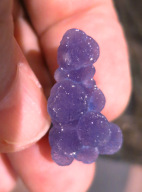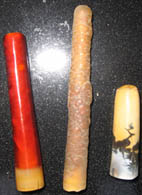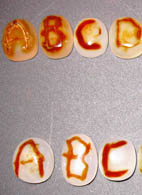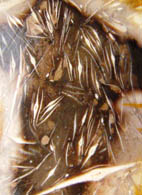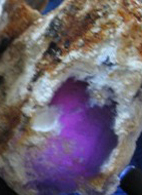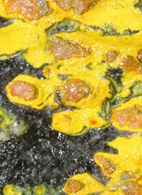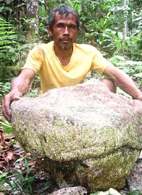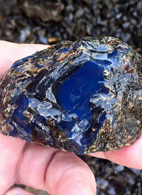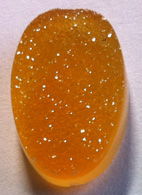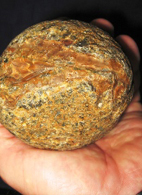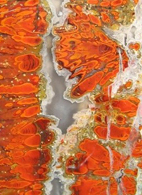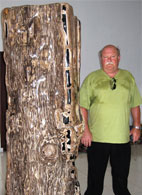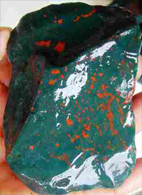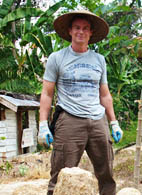Rough Feather Agate from Indonesia, Photo #1, doesn't look like a stone you would feel compelled to pick up while walking along the stream. It just takes one crack of the hammer to illustrate the terrific ornamental patterns inside Photo #2.

Photo #1 - Feather Agate Rough

Photo #2 - Feather Agate Slab
According to Wikipedia.com, there are about 275,000 species of Foraminifera recognized from the fossil record and the study of modern day oceans.
Large benthic (bottom dwelling) Foraminifera are considered good indicators of shallow marine environments. Foraminifera fossils exhibit a great range of shapes and different species are used in age dating and identification of environmental and depositional conditions of ancient marine sediments.
Feather Agate fossils closely resemble the Foraminifera species: Discocyclina Marginata (Cushman) (Photo #3). These critters were single cell asexually reproducing bottom feeders. They lived in the oceans from the Mid Paleocen (approximately 60 million years ago) to Upper Eocene (approximately 33 million years ago). These fossils were originally recovered from sedimentary rocks found in Spain at the southern end of the Pyrennees Mountains.

Photo #3 - Discocyclina Marginata
The preservation of Discocyclina fossils typically occurred in calcareous (CaCO3) limestones. The hard remnants of the skeletons were formed from CaCO3, but at our Sumatran location, the fossils are solidly preserved in a fine grained microcrystaline agate or chert. The original CaCO3 skeleton of Discocyclina fossils are fully replaced by fine microcrystalline silica (SiO2).
Photo #4 is a customer's blow up photo of an individual Discocyclina in Sumatran Feather Agate. At this point, I can only speculate what the conditions were which resulted in this unique form of preservation.

Photo #4 - Micro Photo of Feather Agate Fossil
The Indonesian name for this material is Badar Buluh Ayam which translates to Jasper of Chicken Feathers. The published scientific name Discocyclina seems suggestive of a random exhibit of fossils. We have mined and processed several tons of material into slabs and cabs over the years. A typical show of fossils displays similarities with sheathes of wheat, with clusters of fossils fanning out or rhythmically splayed in the orientation were arranged in when they fell to the sea floor millions of years ago.
Rather than "Disco Agate", I thought "Feather Agate" a more appropriate lapidary name. The often gray to jet black background gives offers terrific contrast for the beige to white colored Discocyclina fossils. The tight ornate pattern and tough, nonporous, microcrystalline agate texture make great lapidary products.
Feather Agate has become a popular media for flint knapping, cabochons, bangles and other lapidary and jewelry products as seen in Photo #5 (setting by RN Sills) below.

Photo #5 - Feather Agate Cab

